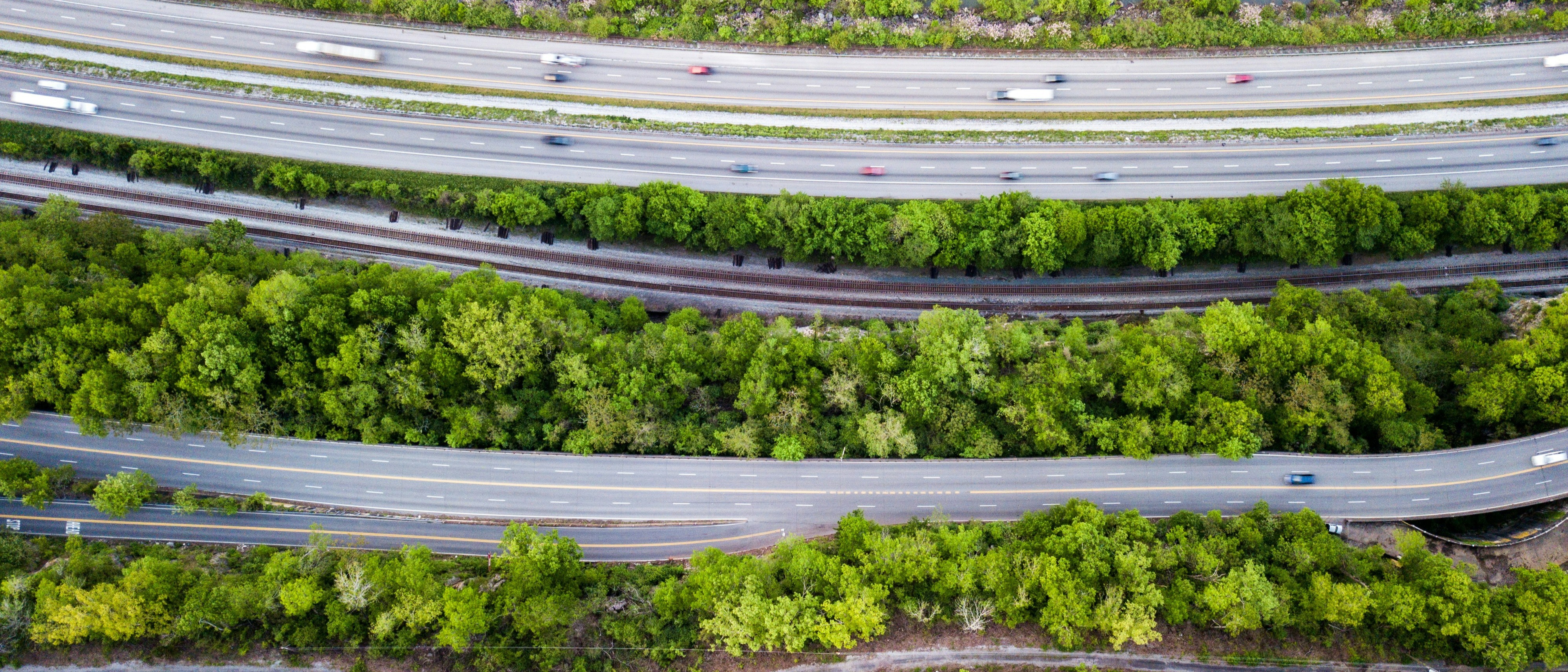
Train, car or plane?
Our choice of transport mode for a holiday trip is crucial in terms of the emissions it generates. This section contains comprehensive information on the climate footprint of traveling by train, car, bus, flight and ferry. You can read more about how we have calculated in our Methodology.
TRAINS
Going on holiday by train is a good choice if you want to reduce your carbon footprint since most passenger trains in Europe are powered by electricity. Train travel in the Nordic countries stands out in this aspect since the carbon emissions from electricity production in the Nordic countries are considerably lower than the European average.
All high-speed trains and night trains in Europe are electric, and although the emissions from electricity production in Europe are higher than in the Nordic countries, the train has a significantly lower climate impact than flying. The emissions from electric trains is much lower than those from diesel locomotives. If you know that a particular train line is powered by diesel or HVO100 you can change this in the calculator.
Between many cities in Europe you can travel by night train. On Back-onTrack.eu you can find an interactive map on all European night trains 2024. Traveling while you sleep is an efficient and convenient way to travel.
Read about our calculations for travelling by train. We do not consider effects from so called green electricity - here you can read about why.
Here is a comparison between all transportation modes.
CAR
A holiday by car with 3-4 people in the car is a relatively low-carbon transport option compared to flying. If you are driving an electric car or using renewable fuel the climate impact will of course be considerably lower. In the calculator, you can choose from 5 car sizes and 7 fuels.
Another advantage is that travelling by car is flexible, and taking a spontaneous detour or spending a night in some cozy little village along the way is a nice way to split a long drive into nice portions.
A longer drive can sometimes also be shortened by taking a ferry for part of the trip. If it is a ferry that operates overnight, it can be quite convenient. However normal ferries cause significantly greater emissions per passenger kilometre compared to driving a car the whole way. High-speed ferries are a particularly bad choice from a climate point of view. Read more about the climate footprint of ferries further down on this page.
Read about our calculations for emissions from cars.
Here is a comparison between all transportation modes.
BUS
In many cases, buses or coaches are relatively good options from a climate point of view. Sometimes even in comparison with trains – e.g. in countries where CO2 emissions from electricity production are relatively high, and always in comparison with diesel trains.
The emissions from a bus or coach trip depend largely on the fuel used, but also on the occupancy rate and fuel consumption. It’s a good idea to ask the bus or coach company which fuel they use, which is also a way of having an impact.
You can change the type of fuel in the calculator if you know that the bus runs on a renewable fuel (HVO100 or FAME100), in which case the emissions are estimated to be only a quarter compared to diesel.
Read about our calculations for emissions from travelling by bus.
Here is a comparison between all transportation modes.
Probably you have heard the argument that CO2-emissions from flying "only" is 3-4 % of the global emissions. Well, it is true, but:
- 1% of the world population stands for 50% of the emissions from flying (source).
- 4% of the world population fly abroad during a given year (source).
- 80% of the world population have never flown (source).
Consequently, very few people are responsible for almost all the emissions from air travel, and most of them come from wealthy countries. If the minority who account for the majority of almost all emissions from air travel were to limit their flying to once per year, or once every two years, the emissions from air travel would reduce drastically.
Flights taken by, for example, Swedish residents are, during a normal year, responsible for about the same quantity of greenhouse gas emissions as all car driving in the country put together. For Swedes, around 80 per cent of the flying (measured in km) are for private purposes, while 20 per cent are for business purposes.
In fact, a flight actually cause less emissions per kilometre than a person driving alone in a car that runs on fossil fuel, but a significant difference is that it is possible to travel much further in a short time on a flight. For example, not many people drive alone 2000 km for a weekend, while this is fairly common when flying.
There is more and more talk about the fact that we should be able to fly about as much in the future as we do now. Partly with the help of various technical and logistical innovations, but above all about SAF:s - Sustainable Aviation Fuels such as biofuels, hydrogen and electrofuels. Read more about this here.
In the calculator, you can choose to see how big the emissions would be if you were to fly with 100% biofuel. Some airlines offer you to pay extra for various percentages of biofuels. In practice, only occasional flights are made with 100% biofuel, but on the other hand, airlines sometimes use a smaller proportion of biofuel. If you pay for 100% biofuel, it is not used in the particular airplane you are sitting in, but the climate benefits even if it is used in many different airplanes.The problem is that biofuel is 3-7 times more expensive than fossil jet fuel. There are mandatory legal requirements for airlines to gradually increase the proportion of biofuel for flights that take place within the EU.
Read about our calculations for emissions from flying.
Here is a comparison between all transportation modes.
FERRY
The main advantage of ferries is that they offer shortcuts between destinations. Overnight ferry services are also an efficient way to travel.
Unfortunately, ferries generate high emissions – even higher per passenger kilometre than flights. Almost all passenger ferries run on fossil fuels. One important factor for their emissions is the speed of the ferry. A high-speed ferry generates much higher emissions than a normal ferry.
Other factors such as fuel type, fuel consumption, capacity utilisation and allocation factor between cargo and passenger transport also influence the emissions. It’s a good idea to ask the ferry company how much emissions they are causing. This will give them an additional signal that their passengers care about this.
Read about our calculations for emissions from ferries.
Here is a comparison between all transportation modes.










